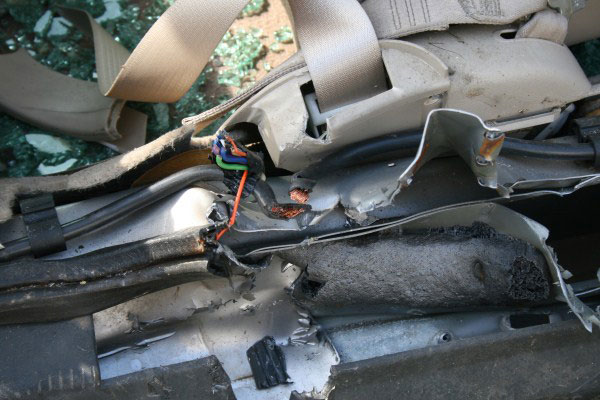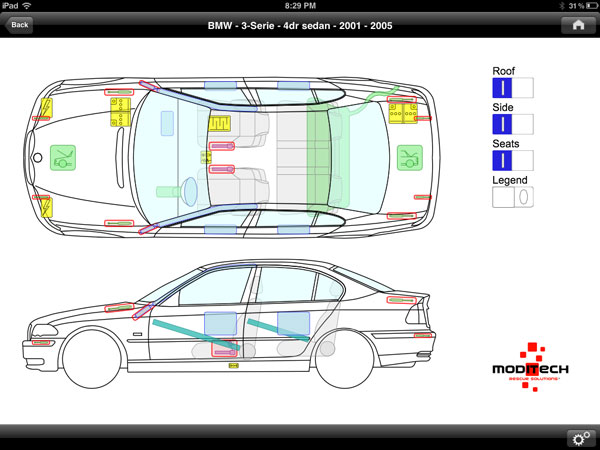By Brock Archer
These days, there is a lot of concern with high-voltage components and cabling in hybrid and electric vehicles, but what about 12-volt cabling? Are low-voltage cables a hazard at motor vehicle accidents?
Yes, even low-voltage cables can create problems for rescuers at an extrication response. Unlike high-voltage cables, low-voltage cables are body grounded, which means that if a positive 12-volt cable is cut or crushed (whether by rescuers or by the accident), it can create an arc flash, a heat buildup, and even a fire if it comes in contact with the vehicle’s body. And it has–last year, a California fire department reported that when its truck company, assigned to extrication, cut through a vehicle’s rocker panel, the cut created sparks which then ignited the interior carpet. The firefighters believed that they had cut through a high-voltage cable, but they had not; instead they had cut through the low-voltage 12-volt positive cable that ran from the battery in the trunk under the trim above the rocker panel. Although the truck company reported having cut the cables of 12-volt battery under the hood, it didn’t realize is that many vehicles have a second 12-volt battery that is often located in the trunk or under a seat.
This story gives us one more reason to confirm that the 12-volt battery is disconnected before we begin working on our extrication assignment. It also reminds us that we need to make sure that there is not a second battery somewhere in the vehicle. So, after we cut a 12-volt battery, how do we confirm that that we have effectively disabled the low-voltage system? It’s as easy as checking the hazard flashers, since these lights are a 12-volt accessory that will work even when the ignition is off. If the hazards are working after we have disconnected the battery, then there may be a second battery somewhere in the vehicle. It’s also important to understand that some hybrid and fully electric vehicles may still have 12-volt power after we cut the vehicle’s 12-volt battery. This is because the high-voltage battery, through the use of the DC-to-DC converter, may be producing the power necessary to run the 12-volt accessories. This is why the proper shutdown procedures for a vehicle that uses a high-voltage battery should include isolating the high-voltage battery. These additional steps also include managing the emergency disconnect (if so equipped) and turning off the ignition to the vehicle.
Here’s a refresher on the 12-volt shutdown steps that responders must perform at all motor vehicle accidents:
1. Immobilize and stabilize the vehicle. At the very least, chock all four wheels.
2. Turn off the ignition by removing the key or pushing the Off button.
3. Cut the 12-volt battery cables. Cut the black (negative) first and then the red (positive). Be sure that the cables are double cut so the memory in the cable does not bring them back into contact. Now, check the vehicle’s hazards to confirm you have completed 12-volt shutdown.
4. If the vehicle is hybrid or electric, you must also use the emergency disconnect (if so equipped).
By performing these simple steps at all motor vehicle incidents, we will reduce the risk of firefighter injury and further injury to the occupants.

(1) An example of a 12-volt cable run above the rocker panel. Notice that this POSITIVE cable is black in color.

(2) An example from the Crash Recovery System of two batteries, one located in the truck and the other under the hood. Image courtesy of Moditech.
Brock Archer teaches vehicle extrication globally and is a first responder relations consultant to automanufacturers. A former assistant fire chief with the Hopland (CA) Fire Department, he instructs on new vehicle technology and basic and advanced techniques to benefit the new rescuer and the veteran. His training material is available at AdvancedExtrication.com.
ALSO BY BROCK ARCHER


